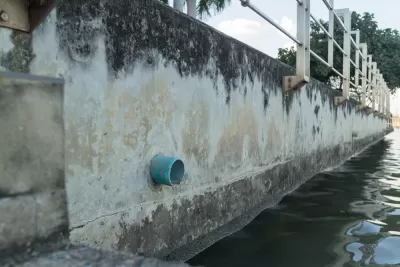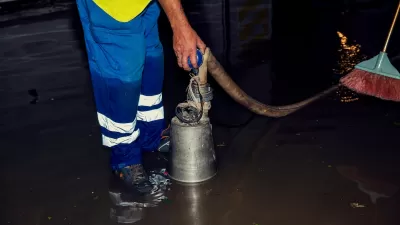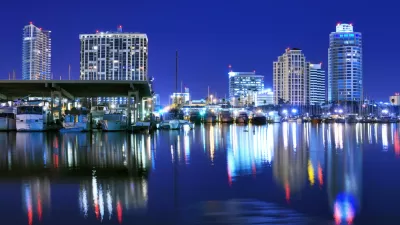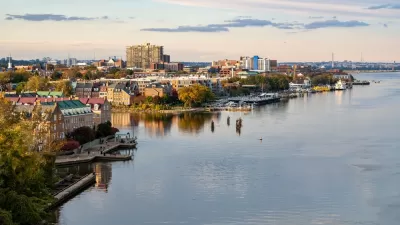The state’s aging sewage infrastructure is failing, but the cost to replace it would be monumental.

Florida sewers have spilled 1.6 billion gallons of wastewater, including 370 million gallons of untreated water, in the last decade, reports a team from GateHouse Media. Many sewers are old and reaching the end of their lifecycles, but municipalities are not able to replace the infrastructure:
Utility officials recognize the problem but say their hands are tied. They’re trying to extend the life of sewers with patchwork repairs. That’s because it could require hundreds of billions of dollars to bring the state’s older infrastructure up to modern standards, experts estimate.
The problem in Florida is exacerbated by storms that push water into the system that then overloads pipes and shuts down pumps. The threat to public health is apparent, but scientists say that fecal matter is also contributing to algae blooms in Florida waterways.
The most sewage, over half, was discharged in the Tampa Bay region. While Fort Lauderdale and Sarasota are taking steps to upgrade infrastructure, most cities do not have the resources. "But the longer municipalities wait, the more the cost will add up, while the environmental toll mounts, said Sen. Joe Gruters, R-Sarasota, who sponsored legislation under consideration this session that would fine utilities up to $2 per gallon of sewage spilled."
FULL STORY: ‘SEWER CRISIS IN THE STATE OF FLORIDA’

Study: Maui’s Plan to Convert Vacation Rentals to Long-Term Housing Could Cause Nearly $1 Billion Economic Loss
The plan would reduce visitor accommodation by 25,% resulting in 1,900 jobs lost.

North Texas Transit Leaders Tout Benefits of TOD for Growing Region
At a summit focused on transit-oriented development, policymakers discussed how North Texas’ expanded light rail system can serve as a tool for economic growth.

Why Should We Subsidize Public Transportation?
Many public transit agencies face financial stress due to rising costs, declining fare revenue, and declining subsidies. Transit advocates must provide a strong business case for increasing public transit funding.

How to Make US Trains Faster
Changes to boarding platforms and a switch to electric trains could improve U.S. passenger rail service without the added cost of high-speed rail.

Columbia’s Revitalized ‘Loop’ Is a Hub for Local Entrepreneurs
A focus on small businesses is helping a commercial corridor in Columbia, Missouri thrive.

Invasive Insect Threatens Minnesota’s Ash Forests
The Emerald Ash Borer is a rapidly spreading invasive pest threatening Minnesota’s ash trees, and homeowners are encouraged to plant diverse replacement species, avoid moving ash firewood, and monitor for signs of infestation.
Urban Design for Planners 1: Software Tools
This six-course series explores essential urban design concepts using open source software and equips planners with the tools they need to participate fully in the urban design process.
Planning for Universal Design
Learn the tools for implementing Universal Design in planning regulations.
City of Santa Clarita
Ascent Environmental
Institute for Housing and Urban Development Studies (IHS)
City of Grandview
Harvard GSD Executive Education
Toledo-Lucas County Plan Commissions
Salt Lake City
NYU Wagner Graduate School of Public Service





























